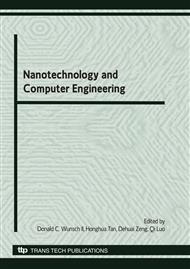p.148
p.154
p.162
p.168
p.172
p.177
p.183
p.188
p.192
The Analysis System of Ultrafine Particles Dynamic Light Scattering Signals Based on B/S Mode
Abstract:
By integrating network technology, virtual instrument technology, video image network transmission and web page fusion technology, the analysis system of ultrafine particles dynamic light scattering signals based on B/S mode was developed,Through internet explorer, the remote client can browse the real-time monitoring data, such as diameters of particles, the autocorrelation function curve, inversion results, power spectrum density, time-frequency distribution. The photon counting technology was applied in the system to replace the expensive correlator, the real-time data of ultrafine particles dynamic light scattering were analyzed by using Burg arithmetic of AR model, Much useful information of the particle size can be obtained by comparing the power spectrum of standard polystyrene particles scattered light signals of 450nm, 300nm, 200nm.
Info:
Periodical:
Pages:
172-176
Citation:
Online since:
June 2010
Authors:
Price:
Сopyright:
© 2010 Trans Tech Publications Ltd. All Rights Reserved
Share:
Citation:


